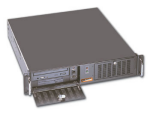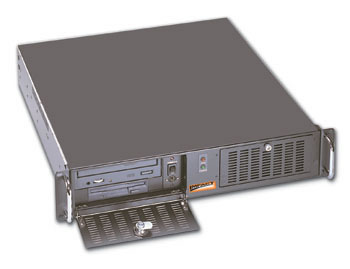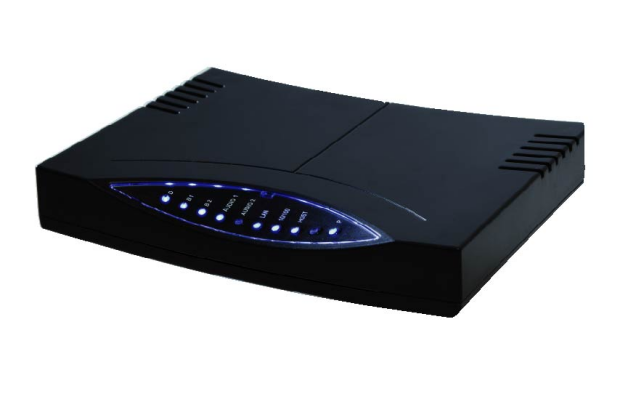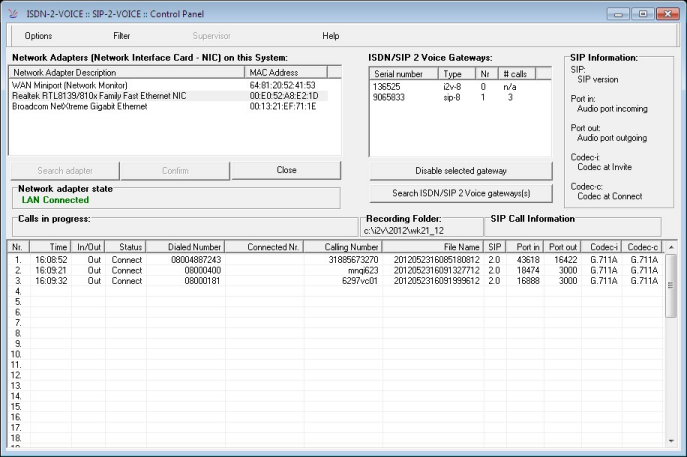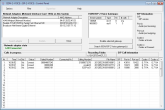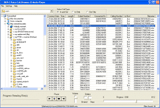The SIP 2 Voice system is a combination of hardware and Windows software.
The system is connected between the Internet connection and the LAN network,
and the recording software is installed on either a Windows PC or Windows server.
Next, the SIP 2 Voice system records all incoming and outgoing telephone
conversations on the hard disk of the designated Windows system.
An overview of the actual telephone calls appears on the screen for control purposes.
All telephone calls are saved as sound files and immediately assigned a file name
that indicates the time at which the conversation took place. These file names can
be changed later as necessary, for example ‘Jones re: Smith 11 Nov’.
Recording Software
The recording software package is a Windows application that automatically records
all telephone conversations on the hard disk. The files that need to be saved can
be categorised and archived just like any other computer file. They can be sent
as an attachment to an e-mail, copied into another folder and saved on a CD-ROM.
One or more conversations can also be copied to an audio CD for instant playback
on any CD player.
After a selected period of time has elapsed, for example a month, a week or
three days, the system automatically deletes all files that do not need to be saved.
Conversations that have been moved to a different folder will be saved indefinitely
until they are deleted manually.
Open system
The recorded calls can be played back on all current platforms: Windows, Android,
Apple and Linux.
The call details however can only be seen on the supplied accompanied call browser
and media player application.
Codecs
Most codecs used in VoIP/SIP calls can be used, including the ITU codecs: G.711-A,
G.711-mu, G.722 and G.729. It is advised to use the digital telephone network codec
(G.711-A in Europe, G.711-mu in the US) and for HD the codec G.722.
This can be achieved by the settings of the telephone set or softphone.
Efficient storage
The sound files that Sip 2 Voice generates are comprised of the original digital
sound data. The data rate is 16.000 Bytes/sec, somewhat less then 1 MByte per minute.
Neither AD/DA conversion nor compression is used.
The conversations are high quality; no compression is used, which means that every
detail is preserved. The sound quality is equal to that of the original conversation.
The two parties are reproduced separately, that is in stereo, with one caller on the
left channel and the other on the right. This is especially effective when it comes
to understanding conversations in which the callers speech overlap one another.
Connecting to recording system
The Sip 2 Voice systems are linked up to the recording PC or server using an
Ethernet connection. This can be done directly through the PC/server
LAN/Ethernet connection or by using a LAN segment with LAN switch.
In that case the hardware is connected to a LAN switch or hub. The recommended
minimum LAN speed for the segment in question is 100Mbits/sec. A standard
LAN switch can be used to link up multiple systems. Alternatively, a PC/server
can be linked up to the LAN network and to the SIP 2 Voice system through
a second LAN connection (so called dual or multi-homed).


